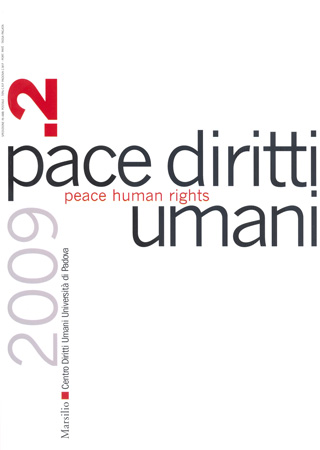Raccolte

La sentenza della Corte europea dei diritti umani per l’omicidio Giuliani: prima condanna per violazione del diritto alla vita pronunciata contro l’Italia
- Contenuto in
- Pace diritti umani - Peace Human Rights, 2/2009
- Tipologia pubblicazione
- Articolo / Saggio
- Pagine
- 147-176
- Lingua
- IT
The Case Giuliani v. Italy before the European Court of Human Rights: First Condemnation of Italy for Violation of the Rights to Life
In the case Giuliani and Gaggio v. Italy (judgment of the Fourth Section of the European Court of Human Rights, delivered on 25 August 2009), the Court found the Italian government non responsible for violation of Article 2 of the European Convention on Human Rights on grounds of excessive use of force and for violation of the positive obligation to protect life. Italy was however condemned for violation of Article 2 in its procedural aspect, because, among others, «the investigation was not adequate in that it did not seek to determine who had been responsible for [the] situation» which led to the killing of Carlo Giuliani, a demonstrator involved in the riots erupted in the city of Genoa during the G8 Summit of July 2001.
The case decided by the Court has been the object of intense debate and deep controversies in Italy. After eight months of investigations, the Italian prosecutor decided in 2002 not to prosecute the Italian carabiniere, Mario Placanica, who shot at Carlo Giuliani. Agent Placanica was considered to be acting in self-defense, and no further judicial investigation was carried out in order to clarify the responsibility of any other high ranked police officers for shortcomings in the organisation of the anti-riot measures. An inquiry into the same facts conducted by the Italian Parliament did not come to a shared conclusion and any successive attempt to set a full-fledged inquiry commission has failed.
The judgment of the Strasbourg Court shares the conclusion of the Italian judiciary as to the claim of self-defense. Considering the «positive obligations» of the concerned state, it reiterates that states have a duty to plan and carry out police operations in a way that fully respect the fundamental right to life of any individual. Italy has not committed any infringement of the obligation to protect the life of Carlo Giuliani during the Genoa clashes, but it has nonetheless violated Article 2 of the European Convention in that the criminal prosecutor had not properly managed the autopsy procedure and, more importantly, the investigation focused only on Placanica’s role. The author envisages a possible contradiction between the two prongs of the verdict.
Quite surprisingly, the judgment was received with complacency by the part of the government, in spite of the fact that it constituted the first condemnation of Italy for violation of the right to life. The applicants have announced they will appeal the decision at the Grand Chamber.

